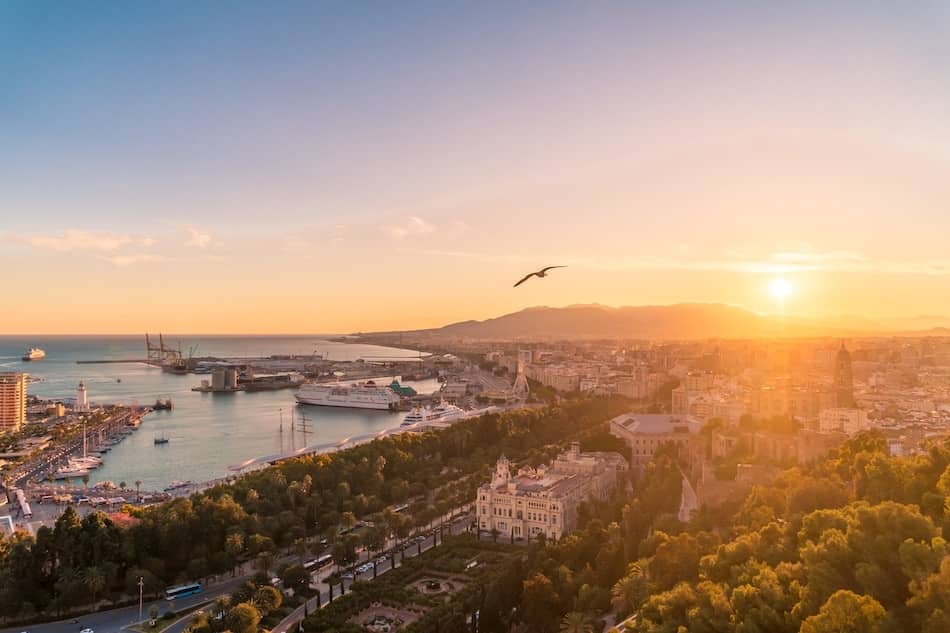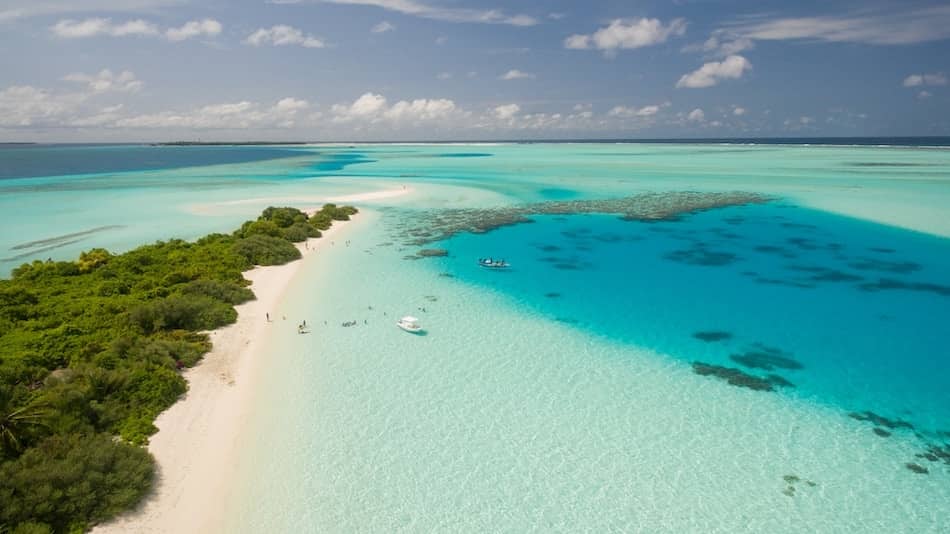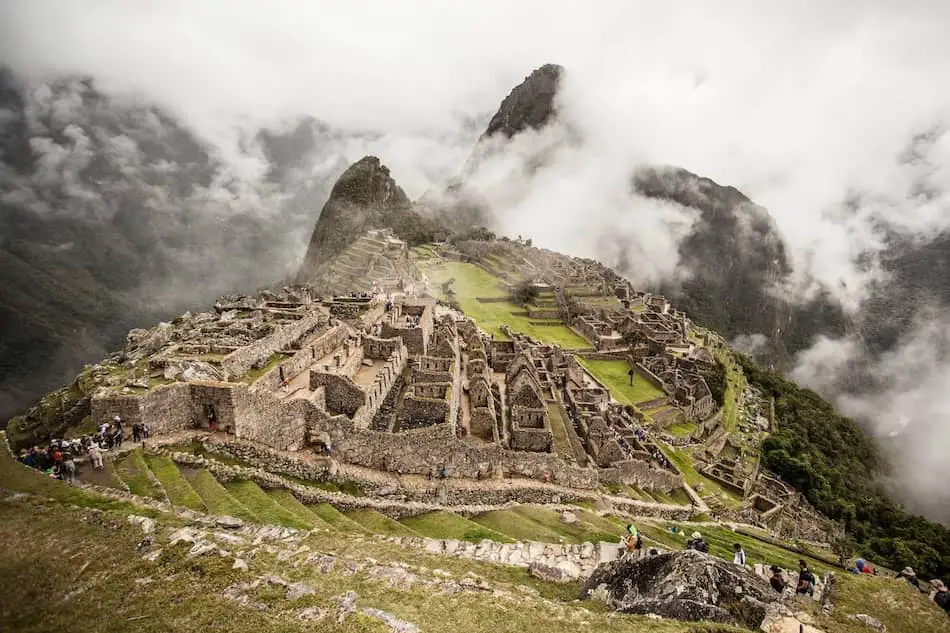
Have you ever wondered what the Spanish speaking countries and their capital cities are? It is something I have always been curious about. So, I researched the topic of the Spanish speaking countries in the world, along with their capital cities. From there, I wrote a helpful blog post to share my findings.
What are the Spanish speaking countries and their capital cities?
- Argentina – Buenos Aires
- Bolivia – Sucre (constitutional and judicial) and La Paz (executive and legislative)
- Chile – Santiago
- Colombia – Bogotá
- Costa Rica – San José
- Cuba – Havana
- Dominican Republic – Santo Domingo
- Ecuador – Quito
- El Salvador – San Salvador
- Equatorial Guinea – Malabo (current)
- Guatemala – Guatemala City
- Honduras – Tegucigalpa
- Mexico – Mexico City
- Nicaragua – Managua
- Panama – Panama City
- Paraguay – Asunción
- Peru – Lima
- Puerto Rico – San Juan
- Spain – Madrid
- Uruguay – Montevideo
- Venezuela – Caracas
Many of these countries have evolved over time. They were not all originally Spanish speaking countries. Some of them have even moved their capital cities. So, let’s explore how each country became Spanish speaking and the finer details of their capital cities.
The 21 Spanish Speaking Countries and Their Capital Cities
Spanish is truly a global language. It is the second most spoken language in the world after Mandarin Chinese. Spanish is spoken by approximately 572 million people and continues to grow.
So, where did Spanish come from and how did it become so popular? I’m glad you asked.
Spanish originated from Latin and was brought to the Iberian Peninsula (where Spain and Portugal lie today) by the Romans around 210 BC. Over the course of history, Spanish became the dominant language on the Iberian Peninsula.
Beginning in 1492, the Spanish discovery and colonization of the Americas spread the language to parts of North America, Central America, parts of the Caribbean, and South America. The language also spread to the Pacific islands of the Philippines, Palau, the Marinas, and Micronesia. However, Spanish is no longer spoken in the Pacific islands.
Today, Spanish is the official language of 21 countries and spoken in many more. Below we will look at the Spanish countries and their capital cities in Europe, Africa, Central America, The Caribbean, and South America.
Europe and Africa

Spanish is the official language in only two countries of Europe and Africa combined. When I did my research, I was a little surprised that only two countries had Spanish as the official language in Europe and Africa. However, I slowly started to realize that many languages were in flux during the early parts of history that saw the rise and fall of the Roman Empire in Europe, parts of Africa, and parts of Asia.
Let’s take a look at the two countries located in Europe (Spain) and Africa (Equatorial Guinea) where Spanish is the official language.
Spain – Madrid
Spain is located on the Iberian Peninsula in the southwestern part of Europe. The country also contains the Canary Islands off the coast of Africa and the Balearic Islands in the Mediterranean Sea.
Again, the origins of Spain arrived with the Roman Empire around 210 BC. History tells us that there were lots of tribes that moved in and out of the Iberian Peninsula during that time. In 1492, Spain set out to discover a trade route to Asia to increase commerce. Instead, the Spanish, led by Christopher Columbus, found the Americas. After Christopher Columbus found the Americas, Spain began their pursuit to colonize the Americas.
Madrid is the capital city of Spain today. However, it was not always the capital.
Madrid dates back to the 9th century when Cordoba built the Royal Palace (Palacio Real). It was not until 1561 that King Philip II moved Spain’s courts to Madrid. Beginning in 1606, Madrid has continuously been the capital city of Spain. Prior to the move of the capital, Toledo served as the capital city. Later, during the 17th century, Madrid began developing into a larger metropolis.
Equatorial Guinea – Malabo (current)
Equatorial Guinea is named for its location because it is near the Gulf of Guinea and the Equator. It is the only African country with Spanish as its official language. Roughly two-thirds of the country speak Spanish. Also, there are two other official languages of the country, which are French and Portuguese.
Equatorial Guinea was discovered by Portgual in 1472. In 1778, Spain gained control of Equatorial Guinea as their colony through the Treaty of El Pardo between Portugal and Spain. After decolonization by Spain, Equatorial Guinea became an independent country in 1968.
Malabo is the current capital city of Equatorial Guinea located on the island of Bioko. However, the capital city will be replaced and moved inland to Ciudad de la Paz (“City of Peace”). Ciudad de la Paz is currently under construction and is being built as the headquarters for the president, government, administration, police and military leadership. This location was chosen due to its easy access and gentle climate.
The Caribbean

As we previously discussed, in 1492, Christopher Columbus sailed from Spain to find trade routes to Asia with the intent of landing in Japan. Instead, Christopher Columbus landed on the island now containing Haiti and the Dominican Republic. From there, the Spanish proceeded to conquer the Caribbean and then spread to the rest of the Americas.
Cuba – Havana
Cuba is a country in the Caribbean. It was inhabited by the Ciboney Taino people beginning in the 4th millennium BC until it was colonized by the Spanish at the end of the 15th century. Cuba was a colony of Spain until the Spanish-American War of 1898. In 1902, Cuba gained independence from Spain.
Havana is the capital city of Cuba. The city was founded by the Spanish in 1515 and was originally named San Cristobal de la Habana. During the 16th century, the Spanish used the city as a strategic location for further conquest of the Americas.
Dominican Republic – Santo Domingo
The Dominican Republic is located on the island of Hispaniola in the Caribbean. It occupies the eastern part of the island that it shares with Haiti. The Taino people inhabited the island of Hispaniola since the 7th century. Christopher Columbus is the first European to discover the island on December 5, 1492.
Santo Domingo became the first permanent European settlement in the Americas. It was also the first city in the Americas under Spanish rule. Today, Santo Domingo still remains the capital city of the Dominican Republic.
The Dominican Republic first declared independence from Spain in 1821. However, in 1822, Haiti forcefully annexed the country. In 1844, the Dominicans won independence after the Dominican War of Independence. Later, the country was again under Spanish rule before they were finally ousted during the Dominican War of Restoration of 1863-1865.
Puerto Rico – San Juan
Puerto Rico is another island located in the Caribbean. Puerto Rico was originally inhabited by the native Taino people. In 1493, Puerto Rico was colonized by Spain as part of the voyage of Christopher Columbus. Puerto Rico played a strategic role in the Spanish Empire where the Spanish could launch their attacks on the neighboring areas. In 1898, following the Spanish-American War, Puerto Rico became a territory of the U.S. under the Treaty of Paris.
Today, Puerto Rico is officially an unincorporated territory of the United States and its capital city is San Juan. During the Spanish conquest, the island was originally named San Juan Bautista and the capital city was named Ciudad de Puerto Rico. However, traders eventually began to refer to the entire island as Puerto Rico and the capital as San Juan. Those names stuck and are still used to this day.
Central America

Following the Spanish conquest of the Caribbean, the Spanish Empire spread to Central America. From 1609 through 1821, a majority of the Central American territories were under Spanish rule, except for Belize, Panama, and the Mexican region of Chiapas.
Below we will discuss the Spanish speaking countries in Central America in more detail and how they were influenced by Spanish colonization efforts.
Costa Rica – San José
Costa Rica is located in the southern region of Central America. It is bordered by the Pacific Ocean to the west, Panama to the southeast, the Caribbean Sea to the east, and Nicaragua to the north.
Costa Rica translates to Rich Coast. It was originally sparsely inhabited by indigenous people until Spanish rule in the 16th century. Costa Rica was a secondary colony of the Spanish Empire due to neighboring countries containing more natural resources, such as gold and silver, that the Spanish wished to use to fund their colonization efforts.
Costa Rica declared independence under the First Mexican Empire in 1821. In 1823, it joined the United Provinces of Central America. Finally, in 1847, Costa Rica formally declared independence as a sovereign nation.
The capital city of Costa Rica is San José. In 1823, the capital was located in Cartago, but it was moved to San José following the Battle of Ochomongo. Other than a couple of conflicts in the 19th and mid-20th centuries, the country has remained stable.
El Salvador – San Salvador
El Salvador is located in the central region of Central America. It is bordered by the Pacific Ocean to the west, Honduras to the northeast, and Guatemala to the northwest.
El Salvador was originally inhabited by several Mesoamerican nations. In the 16th century, the territory was conquered by the Spanish Empire. From 1609 through 1821, El Salvador was part of the Captaincy General of Guatemala, which was an administrative division of the Spanish Empire. In 1821, El Salvador gained independence from Spain as part of the First Mexican Empire. In 1841, El Salvador became a sovereign nation.
El Salvador has over 20 volcanoes. The country has a long history of earthquakes and volcanic eruptions. The capital city of San Salvador was destroyed by earthquakes and volcanic eruptions in 1756 and 1854, and suffered massive damage in 1919, 1982, and 1986. The years listed above are only a handful of the many earthquakes and volcanic eruptions that have occurred in El Salvador throughout the years.
Guatemala – Guatemala City
Guatemala is part of Central America and it is bordered by Mexico to the north, Belize to the east, and Honduras and El Salvador to the south. Prior to the Spanish conquest in the 16th century, the area was populated mostly by the Maya civilization. Following Spanish contact with the natives, many of the native populations died due to the European diseases that were unintentionally spread by the Spanish. These diseases helped the conquest.
Guatemala gained independence from Spain in 1821 when it joined the Federal Republic of Central America. In 1847, Guatemala gained full independence and was its own sovereign nation.
The capital city of Guatemala has changed many times throughout the years for various reasons. The first capital, Villa de Santiago de Guatemala, was founded in 1524. It was moved to Ciudad Vieja in 1527 as a result of an attack on Villa de Santiago de Guatemala.
In 1541, the capital was moved to Antigua due to flooding that was caused by heavy rains that collapsed a lagoon in a crater on Agua Volcano. In 1773-1774, several earthquakes destroyed Antigua and the King of Spain authorized moving the new capital to its current location of Guatemala City. Guatemala City was founded in 1776.
Honduras – Tegucigalpa
Honduras is located in Central America and it borders Guatemala to the west, El Salvador to the south, Nicaragua to the east, and the Caribbean Sea to the north. Honduras also was the home to many Mesoamerican cultures, including the Mayans, before the Spanish conquest of the 16th century.
Honduras was a Spanish colony until its independence in 1821 when it joined the First Mexican Empire. Then, Honduras became a part of the United Provinces of Central America. Finally, Honduras gained full independence as a republic in 1838.
In the 16th century, the Spanish fixed the capital city at Trujillo on the Atlantic Coast. Later, the capital was moved to Comayagua in the center of the country. Then, in 1880, the capital was moved to its current location of Tegucigalpa that is also located in the center of the country.
Mexico – Mexico City
Technically, Mexico is considered to be a part of North America. However, it is connected to Central America, so you could argue that Mexico is also a part of Central America. Mexico’s borders are the United States to the north, the Pacific Ocean to the west, Guatemala and Belize to the south, and the Gulf of Mexico to the east.
Prior to the Spanish conquest in the 16th century, Mexico was home to many Mesoamerican civilizations, including the Olmec, Toltec, Teotihuacan, Zapotec, Maya, and Aztec. In 1518-1519, the Spanish began their conquest of Mexico by attacking the Aztec Empire. The Spanish conquerors also unintentionally introduced the endemic of smallpox that ravaged a majority of the area in the 1520s.
The smallpox endemic allowed the Spanish to easily conquer the Aztec Empire and take control of Mexico. In 1521, the defeat of the Aztec Empire and further Spanish conquest resulted in the Mexican territory being named New Spain, which was a colony of Spain for nearly 300 years. In 1821, Mexico became an independent nation-state following the Mexican War of Independence.
Mexico City is the current capital city of Mexico. It was founded in 1524 during Spanish rule on top of the Mexica capital of Mexico-Tenochtitlan.
The Spanish conquest had a great effect on Mexico and its inhabitants. The Spanish passed on their language and parts of their culture. The Spanish language spread so much throughout Mexico that it is the largest Spanish speaking country in the world today. However, in the next decade, the number of Spanish speakers located in the United States will soon outpace those located in Mexico.
Nicaragua – Managua
Nicaragua is the largest land-mass in Central America. The country is bordered by Honduras to the north, the Pacific Ocean to the west, Costa Rica to the south, and the Caribbean Sea to the east.
The Nicaragua region was populated by many different indigenous people before it was conquered by the Spanish in the 16th century. Nicaragua was a Spanish colony for roughly 300 years, which allowed the language and culture to become ingrained in Nicaragua. Nicaragua gained independence from Spain in 1821 when it joined the First Mexican Empire. In 1838, Nicaragua finally became an independent republic.
Managua is the capital city of Nicaragua. In 1527, the Spanish conquerors made León the capital city of Nicaragua. Following Nicaragua’s independence from Spain, Managua was chosen as the capital city in 1852 to calm the feud between the rivaling cities of León and Granada. Managua remains the capital of Nicaragua today.
Panama – Panama City
Panama is the country that links Central America and South America. It is bordered by Costa Rica to the west, the Pacific Ocean to the south, Colombia to the east, and the Caribbean Sea to the north.
Panama was inhabited by indigenous tribes before the Spanish conquest in the 16th century. Panama was a Spanish colony for roughly 300 years, which helped ingrain the Spanish language and culture into the country.
In 1821, Panama broke away from Spain and joined the Republic of Gran Colombia, which included modern-day Panama, Colombia, Ecuador, and Venezuela. In 1831, the Republic of Gran Colombia dissolved and modern-day Panama and Colombia formed the Republic of Colombia. In 1903, Panama seceded and gained its independence.
The capital city of Panama is Panama City. The city was founded by the Spanish conquerors in 1519. Soon after being founded, the city became a launching point for exploration and conquest of Peru. In 1671, Panama City was attacked and destroyed by fire. In 1673, the city was rebuilt 5 miles southwest of the original city. Today, you can visit the ruins of the original city at what is known today as Panama la Vieja (Old Panama).
South America

After landing in the Caribbean, the Spanish conquerors explored far and wide. Their reach included South America, where they discovered most of the South American countries in the early 16th century. Parts of South America were under Spanish control for roughly 300 years, which allowed the Spanish language and culture to be adopted.
Below we dive into the nine countries of South America where Spanish still remains the official language, along with their capital cities.
Argentina – Buenos Aires
Argentina is located at the southern tip of South America. It is bordered by Chile to the west, the Atlantic Ocean to the south and east, Uruguay and Brazil to the northeast, and Bolivia and Paraguay to the north.
The region was sparsely populated by indigenous people until the Spanish conquerors arrived in the 16th century. The Spanish treated Argentina as a secondary region due to the wealth found in the silver and gold mines of Bolivia and Peru. Therefore, the Spanish included Argentina as a part of the Viceroyalty of Peru, which included modern-day Peru and most of South America.
In 1776, the Viceroyalty of the Rio de la Plata was formed by the Spaniards and named Buenos Aires as its capital. The viceroyalty included Argentina, Chile, Bolivia, Paraguay, and Uruguay. It was created to take advantage of Buenos Aires’ location on the Atlantic Coast and avoid extra months of transit for commerce headed to Lima, Peru.
In 1810, Argentina declared independence and began its fight to stay independent. They fought for independence until 1818 and then had an extended civil war until 1861.
Buenos Aires is the capital of Argentina today. It was first named the capital city of the Viceroyalty of the Rio de la Plata in 1776. Following Argentina’s declaration and fight for independence, Buenos Aires continued to be the capital city of Argentina.
Bolivia – Sucre (constitutional and judicial) and La Paz (executive and legislative)
Bolivia is located in the center of South America. It is bordered by Peru to the northwest, Chile to the southwest, Argentina to the south, Paraguay to the southeast, and Brazil to the north and the east.
Before Spanish colonization in the 16th century, Bolivia was populated by indigenous people such as the Incas and other independent tribes. The Spanish conquest of the Inca Empire in Bolivia began in 1524 and was mostly completed by 1533. The Spanish Empire found Bolivian silver which led to great prosperity for Spain during its colonization of the Americas.
Bolivia began its pursuit of independence from Spain in 1809. It endured 16 years of war before the republic of Bolivia was established.
Bolivia technically has two capital cities. The city of Sucre is the constitutional and judicial capital. La Paz is the administrative capital and the seat of government. Sucre has been the capital of Bolivia since 1825 when Bolivia gained independence from the Spaniards.
Chile – Santiago
Chile is located in South America and stretches along the Pacific Ocean from the middle of the country to the southern tip. It is bordered by the Pacific Ocean to the west, Argentina to the east, Bolivia to the northeast, and Peru to the north.
Chile was first discovered by Europeans in 1520. The Spanish conquerors followed soon after in search of gold and defeated the Inca Empire located in northern Chile, but they were not able to beat the Mapuche tribe in southern Chile. This inadvertently resulted in the Chilean people being very similar and homogeneous due to being blocked by the Mapuche to the south, the Pacific Ocean to the west, desert to the north, and Andes Mountains to the east.
The capital city of Santiago was founded by the Spaniards in 1541. Santiago still remains the capital of Chile to this day, however, the Chilean Congress is located west of Santiago in the port city of Valparaiso.
Colombia – Bogotá
Colombia is located in the northwest region of South America. It is bordered by Panama to the northwest, the Pacific Ocean to the west, Ecuador to the southwest, Peru to the south, Brazil to the southeast, Venezuela to the east, and the Caribbean Sea to the north.
The Spanish arrived in Colombia in 1499 and soon conquered the territory. Before the Spanish conquest, the area was populated by indigenous tribes. The country was under Spanish control for over 300 years and adopted the language and parts of the culture. Colombia remained a colony of Spain until it declared independence in 1810.
Bogotá is the capital city of Colombia today. Bogotá was founded in 1538 by the Spanish conquistadors. Santafé became the capital of this region while it was a Spanish colony in 1717. However, in 1819, Bogotá was re-installed as the capital of Colombia after the country declared its independence.
Ecuador – Quito
Ecuador is located in the northwest region of South America. It is bordered by the Pacific Ocean to the west, Peru to the south, and Colombia to the northeast.
Modern-day Ecuador was populated by Amerindian groups that gradually became a part of the Inca Empire in the 15th century. The region was colonized by the Spanish in the 16th century. Ecuador was under Spanish control for over 300 years and adopted the language and parts of the culture during that time.
Colombia gained independence from Spain in 1820 as a part of Gran Colombia, which included modern-day Ecuador, Colombia, parts of Peru, Panama, Venezuela, parts of Guyana, and parts of Brazil. In 1830, Ecuador broke away from Gran Colombia as a sovereign state.
The capital city of Ecuador is Quito. Quito was founded by the Spanish in 1534 and declared as a city in 1541. Some other fun facts about Quito are that it is the closest capital city to the equator and it is also the only capital in the world directly next to an active volcano.
Paraguay – Asunción
Paraguay is located in south-central South America. It is bordered by Argentina to the south and southwest, Brazil to the east and north, and Bolivia to the northwest.
Before Spanish colonization, indigenous tribes populated Paraguay. Spanish conquistadors arrived in Paraguay in 1524 after traveling northwards up the Parana River and then into Paraguay through the Paraguay River. In 1811, Paraguay overthrew the local Spanish government, which ended the roughly 300 year period of Spanish rule.
Asunción is the capital city of Paraguay. The city was established by the Spanish conquistadors in 1537 and has remained the capital to this day.
Peru – Lima
Peru is located in the western region of South America. It is bordered by the Pacific Ocean to the west, Chile to the south, Bolivia to the southeast, Brazil to the east, Colombia to the northeast, and Ecuador to the northwest.
Peru was populated by indigenous tribes before it was conquered by the Spanish Empire in the 16th century. Peru was under Spanish control for over 300 years and adopted the language and culture during that time.
The Spanish Empire established the Viceroyalty of Peru, which was an arm of the Spanish colonies that contained modern-day Peru and most of South America. In 1821, Peru proclaimed independence from Spain.
Lima is the capital city of Peru today. In 1543, Lima was designated as the capital of the Viceroyalty of Peru. Also, the city suffered massive destruction from earthquakes in 1687, 1746 and 1940, which required them to re-build many of the buildings in the city.
Uruguay – Montevideo
Uruguay is located in the southeastern region of South America. It is bordered by Argentina to the west, the Atlantic Ocean to the south and east, and Brazil to the northeast.
Uruguay was originally inhabited by indigenous people. It was colonized by Europeans much later compared to neighboring countries. One of the first establishments in Uruguay was by the Portuguese in 1680. The Spanish conquistadors eventually pushed the Portuguese out of the region.
The Spanish were the dominant force in Uruguay until it sought its independence in 1811. The Spanish language and culture were adopted by the country. However, the Portuguese language is common in Uruguay due to the former presence of Portugal in the region and because the country is adjacent to Brazil, where Portuguese is the official language.
The capital city of Uruguay is Montevideo. In the late 17th century, the Spanish were located on the west bank of the Rio de la Plata in Buenos Aires, Argentina, while the Portuguese were located on the east bank in Colonia del Sacramento. In 1723, the Portuguese began building fortifications. This prompted the Spanish to end the peace and force the Portuguese out of the region by establishing the city of Montevideo in 1724.
Venezuela – Caracas
Venezuela is located in the northern region of South America. It is bordered by Colombia to the west, Brazil to the south, Guyana to the east, and the Caribbean Sea to the north.
Venezuela was populated by indigenous people before it was colonized by Spain in 1522. The country was under Spanish control for nearly 300 years, which allowed the Spanish language and culture to be adopted by the country. In 1811, Venezuela declared its independence from Spain.
Caracas is the capital city of Venezuela. It was founded by the Spanish conquistadors in 1567. In 1577, it became the capital of Spain’s Venezuela Province. Later, in 1777, Caracas became the capital of Spain’s Captaincy General of Venezuela. Finally, the city has remained the capital of Venezuela to this day.
Related Questions
Who discovered the Spanish speaking Pacific Islands and what countries were they? Ferdinand Magellan led the first Spanish expedition of the Pacific Islands in 1521 that reached the Mariana Islands, which included Guam. Other Spanish explorers discovered the Philippines and later made it a colony of Spain. Guam and the Philippines both spoke Spanish for roughly 300 years.
Why is Spanish no longer an official language in the Pacific Islands? Guam was a Spanish colony until 1898 when it was ceded to the United States under the Treaty of Paris. Today the official languages of Guam are English and Chamorro. The Philippines was also a Spanish colony until the late 19th century. Today the official languages are English and Filipino.
